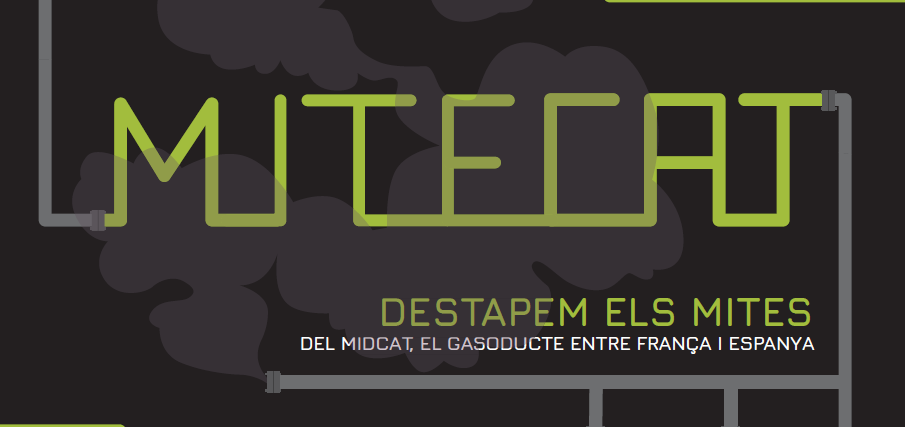For more than a decade, Enagás (in Spain) and Teréga, ex-TIGF, (in France) have been promoting the construction of the Midi-Catalunya pipeline (better known as “MidCat”), a highly controversial gas infrastructure project between France and Spain, now opposed by a fast growing resistance on both side of the Pyrenees.
MidCat would be a new pipeline passing east of the Pyrenees and aiming at doubling the capacity of existing interconnections between France and Spain. The project, which could transport 7.5 bcm of gas each year in both directions, requires the installation of approximately 1,250 km of pipes, including 800 km in France and 450 km in Spain. The investment amounts to astronomical 3.1 billion euros for an infrastructure supposed to be built by 2020.
While it is presented by Enagás and Teréga as a distinct project, STEP (which stands for “South Transit East Pyrenees”) is the first phase of the MidCat project: a 227 km long pipeline crossing the France-Spain border. The MidCat project however looks more and more like a Trojan horse with an ever expanding ambition, increasing in size regularly when new plans are updated at the European level: 25 km long in 20133, 432 km long in 20154 and 577 km long in 2017 (split between MidCat and STEP).
MidCat and its subset, STEP, are both parts of the EU list of energy “Projects of Common Interest” (PCI List)6, a list designed by the European Commission and Member States to identify the priority energy infrastructure projects needed in Europe, allegedly for energy security and climate reasons. Having projects in this list is crucial for promoters like Enagás and Teréga, not only because they benefit from accelerated licensing procedures but also (and mostly) because they are eligible for significant public subsidies and can attract private investors more easily.
The project has been strongly politicised and prioritised by the Spanish government and the European Commission is making progress thanks to the wait-and-see attitude of the French authorities. However, the project casts serious economic, environmental and climate doubts and is now strongly opposed by dozens of groups of concerned citizens, members of the European Parliament and environmental organisations at local, regional, national and Europe levels.
This report aims at presenting these doubts, at debunking the myths developed by Enagás and Teréga to promote MidCat/STEP and at revealing the real interests behind it.
MYTH 1: Gas contributes to the fight against climate change
MYTH 2: Gas facilitates a good energy transition
MYTH 3: Gas is a clean energy source
MYTH 4: MidCat/STEP is necessary for the security of gas supply
MYTH 5: MidCat/STEP is necessary for the diversification of gas supplies
MYTH 6: STEP is a cheap and efficient investment
MYTH 7: Gas prices will decline thanks to MidCat/STEP
MYTH 8: MidCat/STEP is promoted by companies working for the “common interest”.
